Disclaimer: Unless specifically defined, I use the word classroom to refer to any group learning space, digital or physical.
I’m sitting in the back of my first face-to-face class in 2 years. My glasses fog up from my mask and as I look up I see a fuzzy group of people watching a smudge pace and talk in front of them. The abstraction of shapes makes me stop and think for a moment. How overlapped is this scene with other activities? In my mind, I change the fuzzy lecture into a story, a concert, a demonstration of some feat of strength or wit. How many of our activities look like this finger painting of color and light? And what was that feeling when it was repainted with sterile colors and warnings? Or with black boxes and Zoom calls? A fuzzy group of people watching a smudge pace and talking in front of them.
I clean my glasses off and narrow my eyes at the scene. Like a child having been burned by something previously seen as warm or returning to a hometown to find nothing’s changed- it all feels familiar but somehow different.

“Re-evaluate your values now – values should change because the pandemic was [is] such a big impact”.
Salome Asega, director of NEW INC, EYEO 2022, Panel Discussion, Fostering Creative Communities
When talking about caring for and maintaining communities that have been through the pandemic, Salome Asega director of NEW INC says, “Re-evaluate your values now – values should change because the pandemic was [is] such a big impact on communities.”
As someone with both a student and teaching perspective, my value of a course, online, hybrid, or face-to-face, has changed. Doing triage on the learning system of the university at the beginning of the pandemic helped me realize how precarious a classroom learning experience can be. Having a dedicated physical location to meet, or the required internet speed to access content were luxuries many of us (myself included) assumed as given until they weren’t.
My unease comes from the tension of being a student wary of trusting my future to an educational system that I just saw break, and being an educator who knows just how hard the instructors are working to keep the educational experience afloat. Today, hearing an instructor’s lecture question fall quietly unanswered in a face-to-face classroom of 30-something students makes me physically cringe. I’d rather listen to a dog eat a marmot. And yet- I know on my face is the look of someone waiting. It’s the same look as the other students. We are waiting for someone to go first and test these familiar waters for safety.
As instructors, how do you work with these learners and rebuild trust in the learning process? Below are a few ways I’ve seen this question answered. They are by no means definitive, and a generic approach may not work for everyone.
- Address current instability and present the structures in your course designed to cope with changes: Many face-to-face courses are using online LMS classrooms and Zoom recordings to keep students, who may get sick or have to travel unexpectedly, from falling behind. Clear instructions on the best method to communicate with the instructor and instructor availability are additional ways to increase the feeling of stability in your course. Honoring this availability, and communicating when things change, is the instructor’s responsibility. Perhaps most importantly, address student concerns about meeting the expectations of the class early on and communicate your teaching values.
- Identify the most important aspects of your course from a student’s perspective and get students to that material as quickly as possible: I’ve recommended this to almost every online course I’ve ever worked on. If there is an activity in your course that students seem to get a lot out of, consider rearranging your materials to make it happen sooner. Students may be feeling a little disillusioned with the educational system right now which can manifest as wariness and pessimism. Getting as many students as possible to that first ‘ah ha’ moment, as quickly as possible, has never been more important.
- Trust your process and keep going: Students may be less involved than in previous semesters and you may find yourself wondering “Is it me? Am I doing this wrong?”. While doing some reflection on your teaching practice is always good, current context may be influencing student response more than the way you present your materials.
Curious about what a student perspective of your course looks like? Try the LEAP program.
Today, we have the opportunity to add something new to the classroom. Hybridizing, or the adding of asynchronous and synchronous methods, is the most visible change we’ve made, even though it may not be the most significant. Consider that for you, the value of seeing a learner’s face light up with understanding, or a few struggling students improving, may have also changed. It’s part of what makes navigating a post-COVID, or at least sort of post-COVID, space so difficult. What values in teaching have changed for you? Have you noticed changes in your student’s responsiveness this semester? Do you have a method of working with these students you’d like to share? Please comment below or reach out to nfeemster@alaska.edu.

